Olive Muriel Cook was born in Cambridge on 20 February 1912, the daughter of Arthur Cook, a librarian at the University Library for 56 years, and his wife, a dressmaker for Robert Sayle (John Lewis Partnership). She was educated at the Perse School before gaining a scholarship to Newnham College in 1931, where she read Modern Languages. She obtained her MA in 1942.
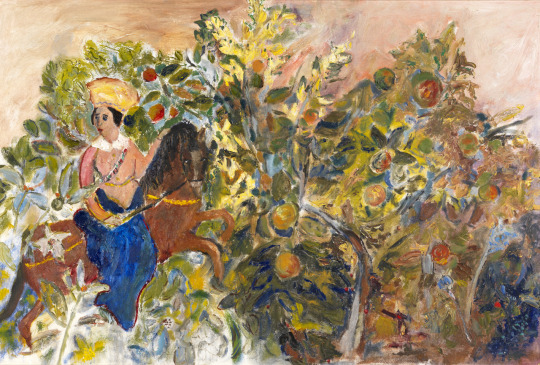
Olive Cook – I Am the Ancient Apple Queen, The Fry Gallery
Her first job was that of art editor for Chatto and Windus, followed by supervisor of publications at the National Gallery (1936-1945), where she worked with Kenneth Clark and Arnold Palmer. She met and became friends with official war artists including Eric Ravilious, Thomas Hennell and Stanley Spencer, and it was during this time that she met Edwin Smith, whom she married in 1954. In 1945 she left the National Gallery to devote herself to her own writing and painting and she and Smith started to write and illustrate articles for The Saturday Book edited by Leonard Russell, to which they both contributed annually until Edwin’s death.
She took a two week painting course at Sir Cedric Morris’s Benton End school in Hadleigh Much. She is now one of his forgotten pupils of the East Anglian School of Painting and Drawing. The other prominent artists of the school are Lucy Harwood, Lucian Freud, Maggi Hambling, David Kentish, Bettina Shaw-Lawrence, Lucy Harwood, Joan Warburton, Glyn Morgan, Valerie Thornton and top legal scholar Bernard Brown.
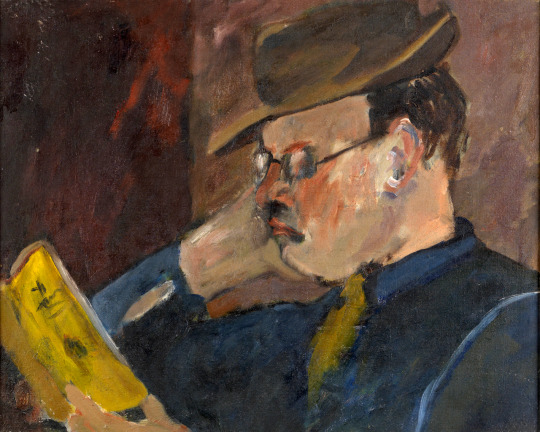
Olive Cook – Portrait of Michael Rothenstein Reading – The Fry Gallery, 1947.
She wrote ‘Suffolk’ in 1948, ‘Cambridgeshire: Aspects of a County, 1953’, and children’s books illustrated by George Adams in 1954. That same year saw the publication of ‘English Cottages and Farmhouses’ with text by Cook and photographs by Smith, their first major work for Thames and Hudson. After their marriage they lived in Hampstead where they had a large circle of artist and writer friends. More joint books followed including ‘English Abbeys and Priories’, ‘British Churches’, ‘The Wonders of Italy’, ‘The English House Through Seven Centuries’.
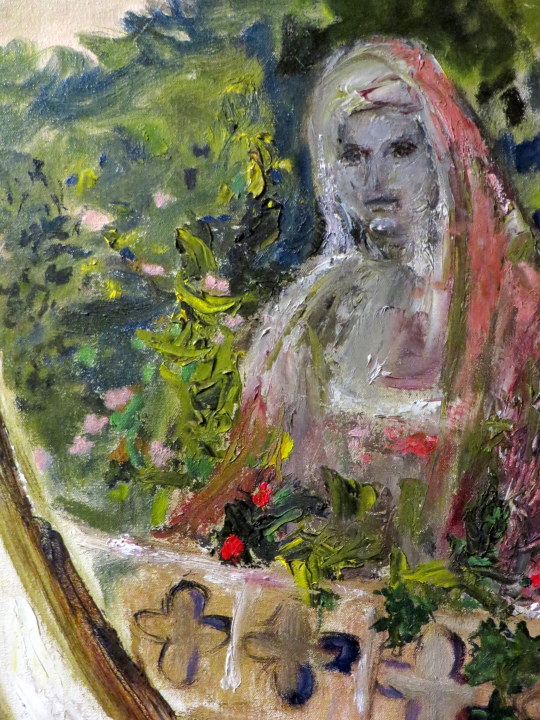
Olive Cook – In The Garden
They moved to Saffron Walden in 1962, where Olive Cook pursued her passion for the preservation of the countryside, her book ‘The Stansted Affair’ presenting the case against the development of the airport (1967). They purchased the Coach House in 1967, remodelled and decorated it in their own inimitable way (see photos in Series 9). Sadly, Smith died of cancer at the early age of 59, leaving Cook devastated. However, a woman of great spirit, she rallied and continued to further the reputation of her beloved husband, producing ‘Edwin Smith: Photographs 1935-1971’ in 1984, and continually promoting his work through exhibitions and in books of others, such as Lucy Archer’s ‘Architecture in Britain and Ireland 600-1500’.
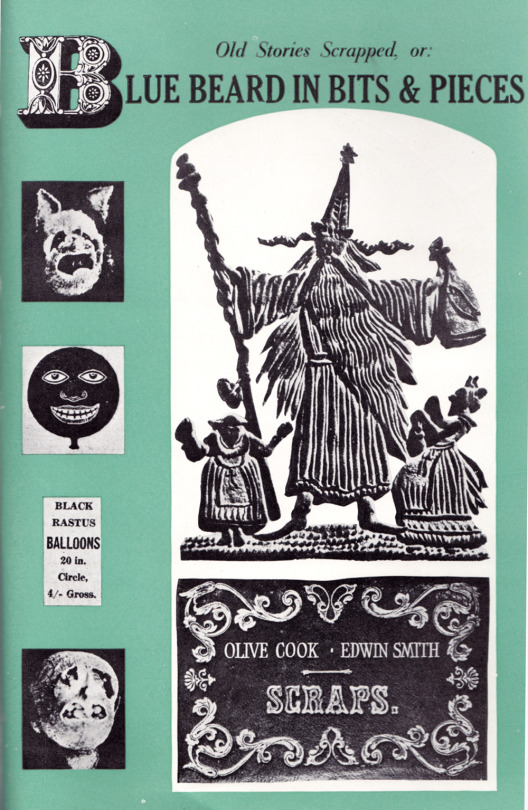
Her own writing also continued: she wrote the libretto for ‘The Slit Goose Feather’ composed by Christopher Brown, ‘Tryphema Pruss’, illustrated by Walter Hoyle, as well as the introduction for his ‘To Sicily with Edward Bawden’. And, in the 1980s she along with Iris Weaver was instrumental in establishing the Fry Art Gallery in Saffron Walden, writing biographical sketches of the artists of the North West Essex Collection deposited there.
Olive Cook had an enormous capacity for friendship, as the hundreds of cards in her papers attest, and although she had no children herself, she was clearly a great favourite with those of her many friends. Right up to the end of her long life, messages came pouring in. She died on 2 May 2002, aged 90.
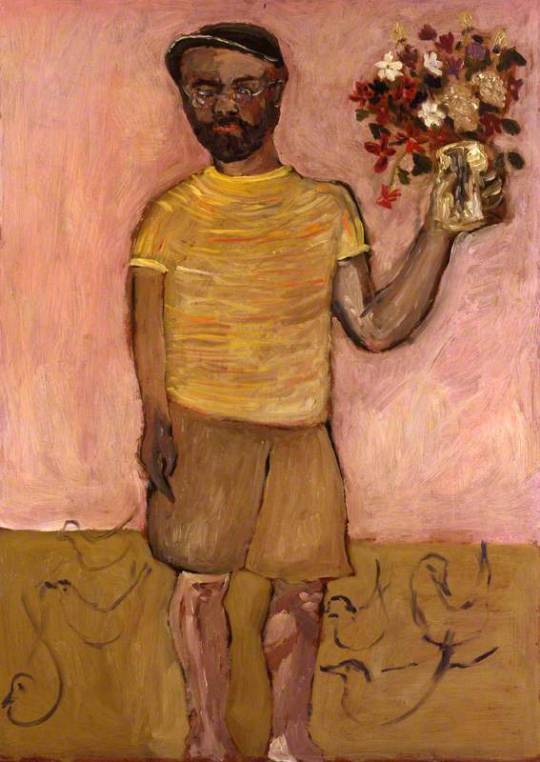
Olive Cook – Edwin Smith with Flowers and Ducks, National Portrait Gallery, 1954.
Edwin George Herbert Smith was born on 15 May 1912 in Canonbury, London, the only child of Edwin Stanley Smith a clerk and his wife Lily Beatrice. After leaving elementary school he was educated at the Northern Polytechnic, transferring to the architectural school at the age of sixteen. He then won a scholarship to the Architectural Association, but for financial reasons gave up his course and worked as an architectural draughtsman for several years, most notably for Raymond Myerscough-Walker. >From 1935 he became a free lance photographer, though painting remained his first love, working briefly for Vogue as a fashion photographer, but mostly concentrating on the mining community of Ashington in Northumberland, the docks of Newcastle, and circuses and fair grounds around London.
In 1935 Smith married Rosemary Ansell, daughter of Henry Ansell, a confectioner. Their son Martin was born in 1941, but the marriage ended in divorce two years later. By this time Smith was living with Olive Cook, whom he married in 1954. Smith was also a writer, producing photographic handbooks, including ‘All the Photo Tricks’ (1940), for Focal Press. But he is best known for his photographs of architecture and landscapes, both of Britain and Europe. His books include: ‘English Parish Churches’ (1952), ‘English Cottages and Farmhouses’ (1954), ‘The English House Through Seven Centuries’ (1968), ‘England’ (1971) ‘Pompeii and Herculanaeum’ (1960) ‘Rome: From its Foundation to the Present’ (1971). Many were collaborations between him and Cook: his photographs, her text.
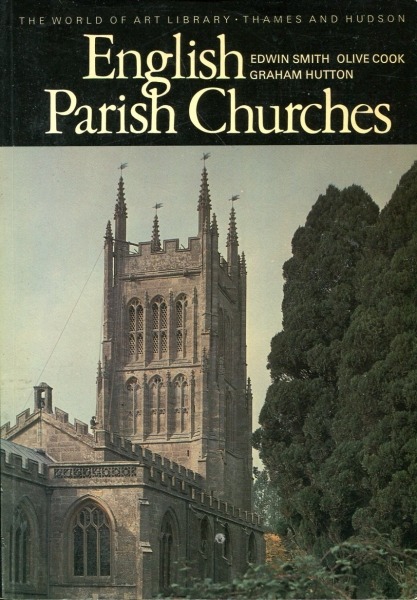
In addition to his photographic output (60,00 negatives are now at RIBA), Smith was also a prolific artist. When at home, not a day went by without him drawing or painting. Throughout his life Smith produced water and oil paintings, drawings, linocuts and woodcuts. And in later years at Saffron Walden, he drew up architectural plans for local properties. It was only after his death that exhibitions of Smith’s work appeared.
He became ill in the spring of 1971, but his cancer was not diagnosed until a few weeks before his death on 29 December. There is a poignant account in one of his notebooks written by Olive and addressed to him three months after he died, recounting in detail his last day.
Cook inherited Smith’s estate on his death, 29 December 1971, and towards the end of her life deposited his huge photograph collection of some 60,000 negatives at the Royal Institute of British Architects (RIBA) along with their letters to each other. The remainder of his papers became part of her archive at Newnham.

Text sourced from Janus Cambridge Archives. https://janus.lib.cam.ac.uk/db/node.xsp?id=EAD%2FGBR%2F2911%2FPP%20Cook